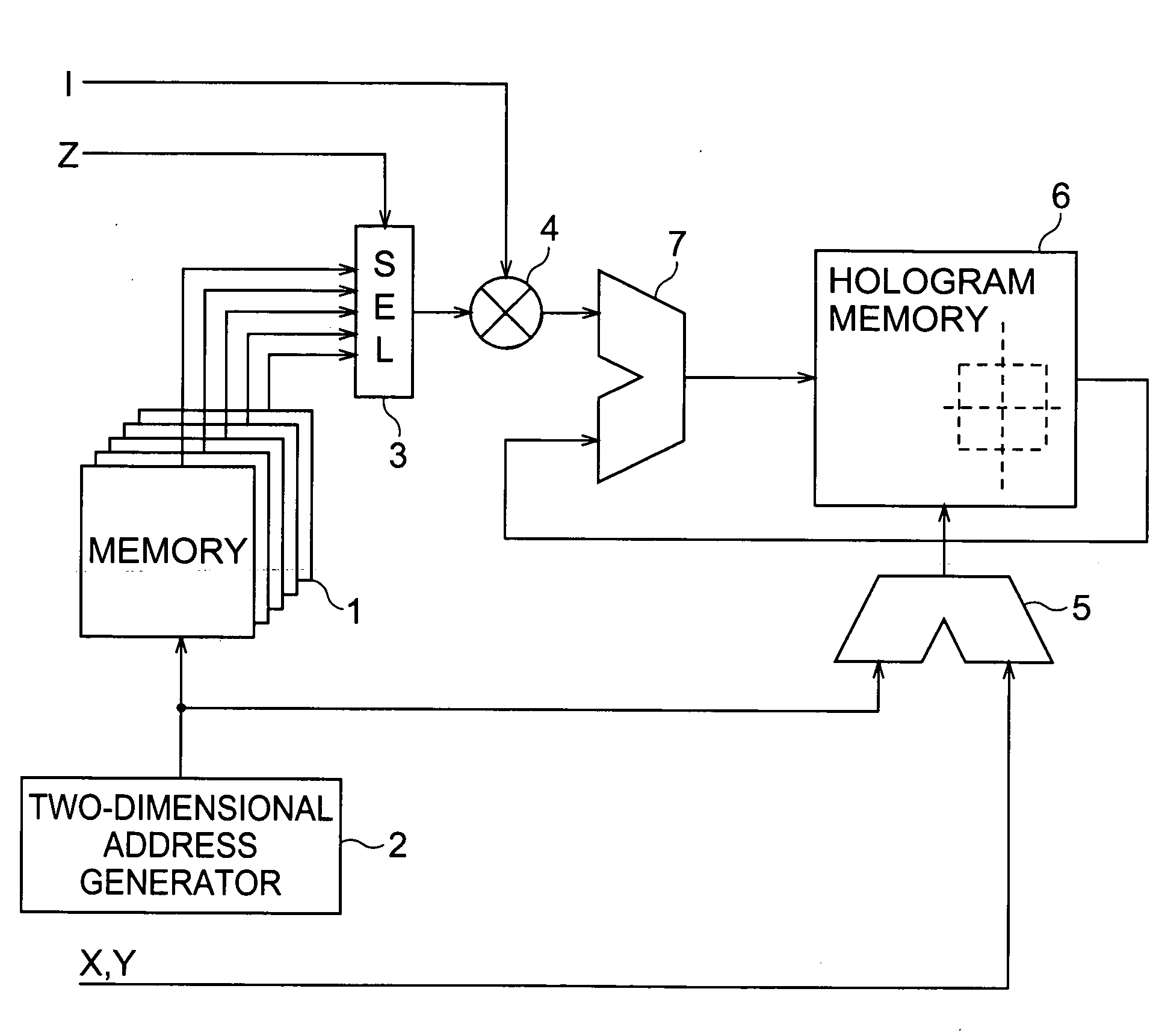Convolution integral calculation apparatus
a technology of integral calculation and integral calculation, applied in the field of integrator, can solve the problems of large amount of preparation time and short time required for hardware preparation, and achieve the effect of high speed
- Summary
- Abstract
- Description
- Claims
- Application Information
AI Technical Summary
Benefits of technology
Problems solved by technology
Method used
Image
Examples
first embodiment
[0064]A first embodiment of a convolution integrator according to the present invention shall now be described. FIG. 1 is a block diagram of a convolution integrator according to the first embodiment. The convolution integrator according to the first embodiment is constituted of a counter 10 (address generator), a memory 20 (third signal value generator), a memory 30 (first signal value generator), an initial phase value generator 40 (second value signal generator), element processors PE0, 0 to PEn, m, shift registers SR1 to SRn, and a D / A converter 50. Of the above, the counter 10, the memory 20, the memory 30, the initial phase value generator 40, the element processors PE0, 0 to PEn, m, and the shift registers SR1 to SRn operate in synchronization to a common pixel clock signal PCLK.
[0065]The counter 10 receives the clock signal PCLK, counts the number of pulses of the signal, and outputs count values as coordinate values X and Y. The memory 20 has stored therein luminance values...
second embodiment
[0083]A second embodiment of the convolution integrator according to the present invention shall now be described. In comparison to the convolution integrator according to the former first embodiment, the convolution integrator according to the second embodiment is substantially the same in the overall arrangement shown in FIG. 1 but differs in that the initial phase values stored in the initial phase value generator 40 are 2-bit data as described later and also differs in the arrangement of each element processor PE.
[0084]FIG. 3 is a block diagram of an element processor PE in the convolution integrator according to the second embodiment. The element processor PE has a constant generator 91B, the multiplier 92, the adder / subtractor 93, and the register 94. The constant generator 91B receives the coordinate value, that is, the reproduction distance Z (first input value) output from the memory 30, also receives the initial phase value P (second input value) output from the initial ph...
third embodiment
[0091]A third embodiment of the convolution integrator according to the present invention shall now be described. In comparison to the convolution integrator according to the former first embodiment, the convolution integrator according to the third embodiment is substantially the same in the overall arrangement shown in FIG. 1 but differs in the arrangement of the initial phase value generator 40 as shall be described below.
[0092]FIG. 4 is a block diagram of the initial phase value generator 40 in the convolution integrator according to the third embodiment. The initial phase value generator 40 includes an n-ary counter 41, an m-ary counter 42, and a combinational gate circuit 43.
[0093]The n-ary counter 41 receives a horizontal scan clock signal PCLKH that is a portion of the clock signal PCLK input into the counter 10 shown in FIG. 1, counts the number of pulses of the clock signal PCLKH, and outputs the count value to the combinational gate circuit 43. The m-ary counter 42 receiv...
PUM
 Login to View More
Login to View More Abstract
Description
Claims
Application Information
 Login to View More
Login to View More - R&D
- Intellectual Property
- Life Sciences
- Materials
- Tech Scout
- Unparalleled Data Quality
- Higher Quality Content
- 60% Fewer Hallucinations
Browse by: Latest US Patents, China's latest patents, Technical Efficacy Thesaurus, Application Domain, Technology Topic, Popular Technical Reports.
© 2025 PatSnap. All rights reserved.Legal|Privacy policy|Modern Slavery Act Transparency Statement|Sitemap|About US| Contact US: help@patsnap.com



